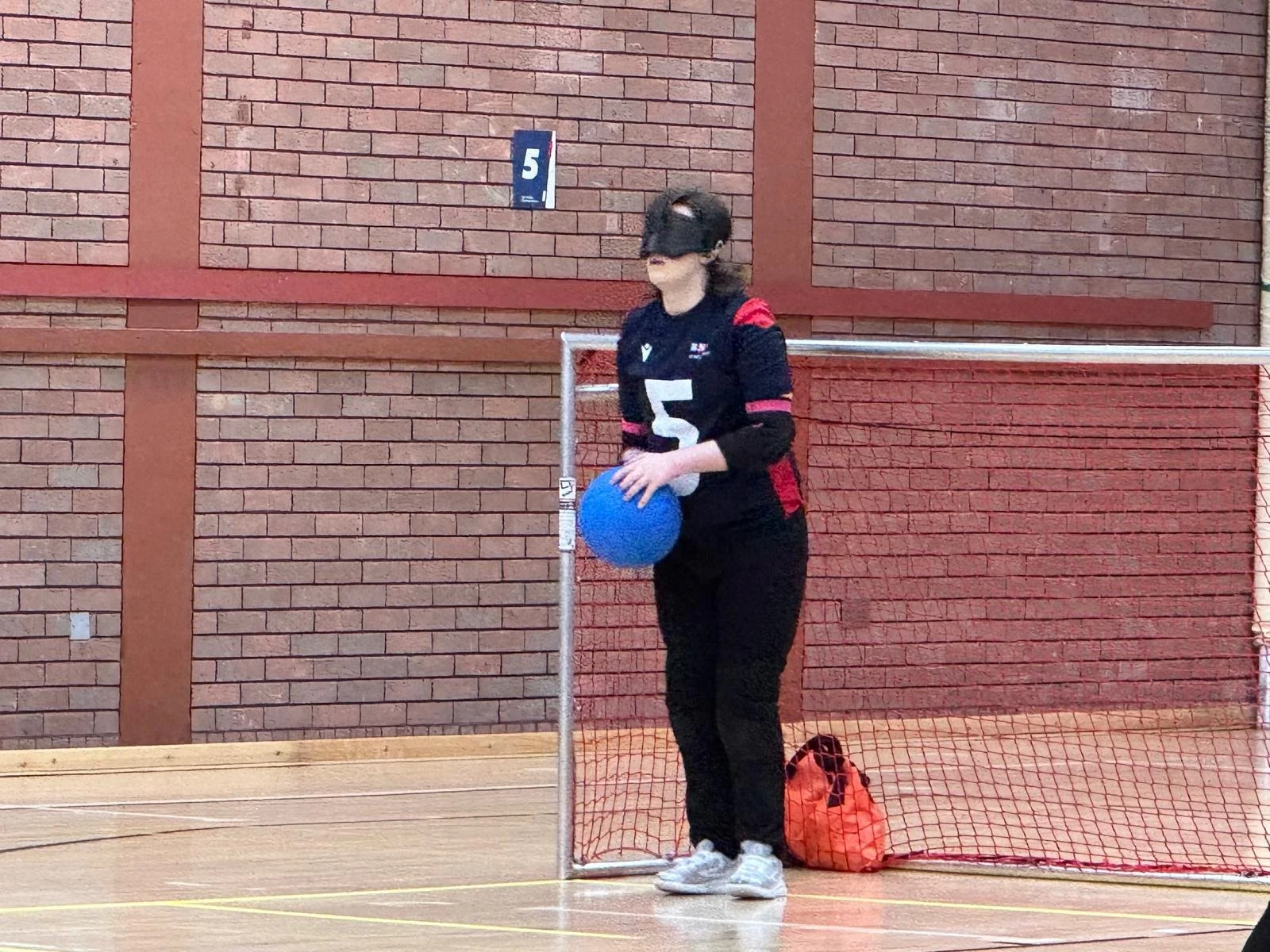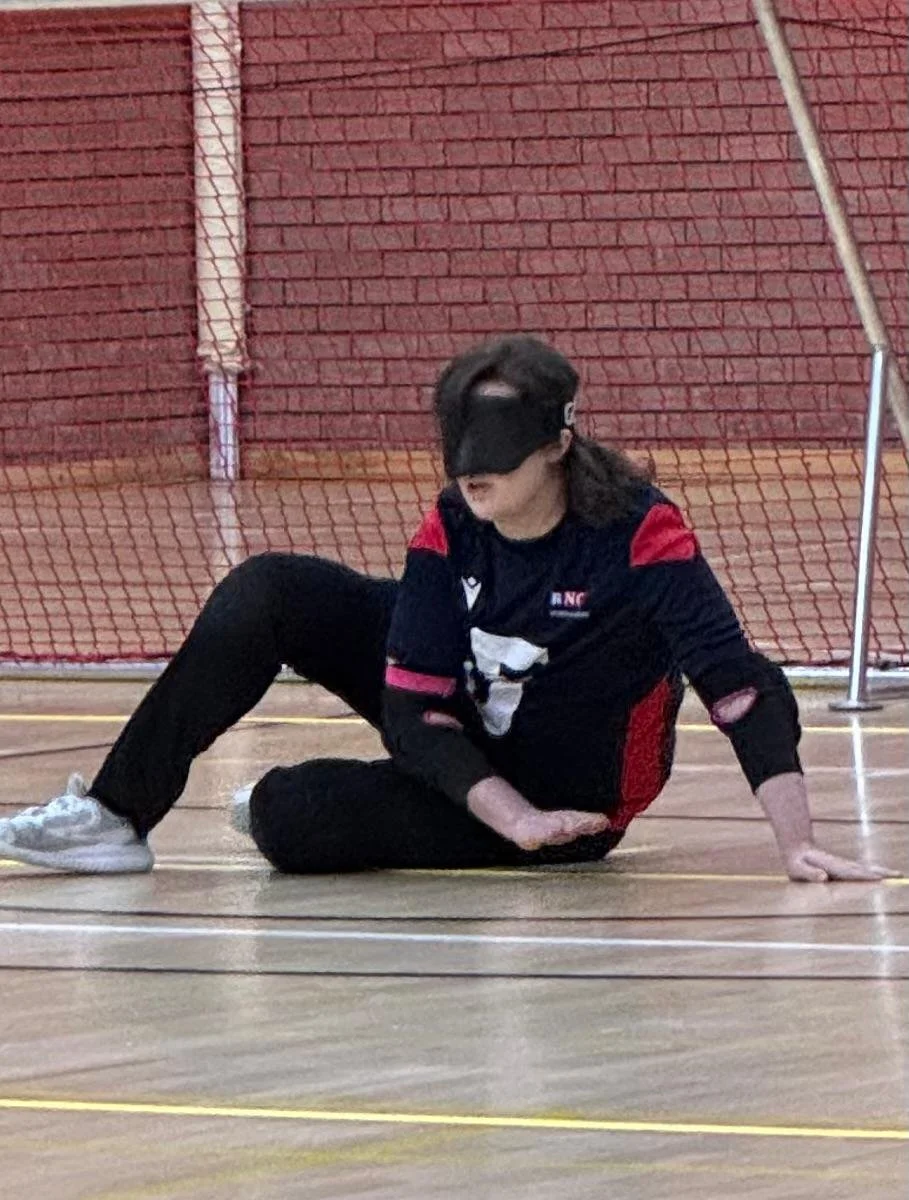What Is Goalball?
Goalball is a competitive and exciting team sport designed specifically for the blind and partially sighted. It's played on an indoor court by two teams of three players. Players wear blackout eyeshades to balance out differences in vision impairment and use their hearing to track the ball, which has bells in it. Because of the unique nature of players using their hearing, the game is played in complete silence.
Players throw the ball under-arm, in a bowling-like motion, aiming to get it into their opponent's goal, whilst the other team use their bodies to dive and block the ball. They then take their turn to throw. It's almost like reverse dodgeball! It's a game of skill, strategy, and deception.
The court measures 18x9 metres and has tactile lines to allow players to orientate themselves without vision. The game is generally split into two halves of 12 minutes, for a total of 24 minutes. The clock is a countdown stop-clock — i.e. the clock is stopped for any stoppage in play as opposed to adding stoppage time to the end. A typical 24-minute game usually takes around an hour to complete.
The sport is played competitively at a range of levels from Regional, Intermediate, and Super League within the UK, and internationally in a variety of championships all the way up to the Paralympics.
You do not have to be visually impaired to play goalball recreationally or even at most domestic competitions.
Want to watch a full goalball game?
How about watching a Paralympic Gold Medal Match from Paris 2024 between Turkey and Israel?
Unable to see the embedded video? Click here to watch.
Key Rules to Know
Penalties — If a team commits a rule violation, they receive a penalty, meaning one player must defend a penalty shot alone. In many cases (specifically "personal penalties"), the defender will be the person who committed the violation. In other cases ("team penalties"), the other team get to choose who will defend.
High/long ball — The court is divided into three sections between the two teams (each team's zone and the neutral zone). After being thrown, the ball must touch your team zone and the neutral zone. Otherwise, you will get a penalty.
10 seconds rule — From the moment a team first touches the ball in defence, they have 10 seconds to throw the ball back to the other side. If not, they will receive a Team Penalty.
Noise — If a team makes too much noise whilst throwing the ball, they will receive a penalty. This is to give the other team a chance to listen and track the ball. Players may make noise when their team is not throwing to communicate. Coaches are not allowed to talk to their team whilst the game is "in play", instead having to wait for a break in play or call a timeout.
Don't touch your shades! — A player is not allowed to touch their shades for any reason without permission from the referee. This stops players with more sight taking a peek.
What if it’s a draw? — If a winner is required (e.g. a gold medal match) and after 24 minutes of play the score is still a tie, the game will go to overtime, which is a single half of 6 minutes played as "golden goal" or in other words "first goal wins". If after that it’s still a draw, the game moves to "extra throws" which is essentially a penalty shoot out. You can also get "sudden death extra throws" for after that, but that's rare.




